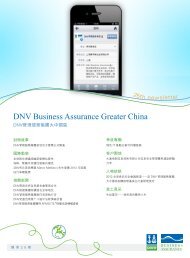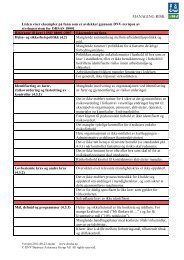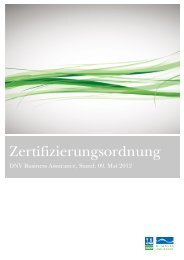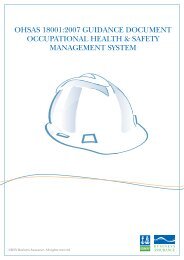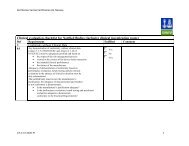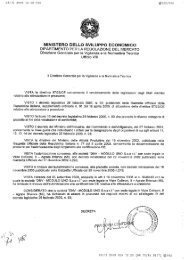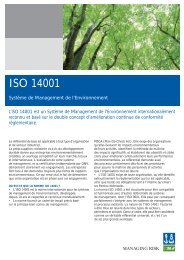Download - DNV Business Assurance
Download - DNV Business Assurance
Download - DNV Business Assurance
Create successful ePaper yourself
Turn your PDF publications into a flip-book with our unique Google optimized e-Paper software.
+ Material technology<br />
DRAWING THE<br />
CORROSION-RISK PICTURE<br />
ASSET MANAGERS WANT TO REDUCE CORROSION RISKS. TO ENABLE THEM TO MAKE THEIR DECISIONS<br />
IN A FAMILIAR CONTEXT, CORROSION PROFESSIONALS HAVE STARTED APPLYING RISK PRINCIPLES.<br />
OPTIMISED CORROSION MANAGEMENT IS THE GOAL.<br />
TEXT: EVA HALVORSEN PHOTOS: DAMIR CVETOJEVIC<br />
There is zero tolerance for failures<br />
that affect people or the environment,<br />
and asset managers’ expectations<br />
regarding corrosion-risk reduction<br />
are now higher than ever before. This is<br />
true across most industry segments where<br />
the demand for corrosion management<br />
has grown, such as the oil and gas, chemical<br />
process, nuclear, bridge, and aircraft<br />
industries. At the same time, the infrastructure<br />
in countries that experienced their<br />
peak industrial growth more than 30 years<br />
ago is becoming increasingly difficult to<br />
manage. Although most assets can be operated<br />
beyond their original design life, the<br />
information related to their construction,<br />
maintenance and historical damage may<br />
be of low quality or have gaps.<br />
“These factors complicate risk assessment,<br />
causing apparently unlikely events to<br />
occur without warning,” explains corrosion<br />
expert Oliver Moghissi. He is the director<br />
of the <strong>DNV</strong> Materials and Corrosion<br />
Technology Center located in Columbus,<br />
Ohio, USA. He is also the President of<br />
NACE International, the world’s leading<br />
corrosion society, with more than 27,000<br />
members from over 110 countries. NACE’s<br />
mission is to ‘Protect People, Assets, and<br />
the Environment from the Effects of<br />
Corrosion’.<br />
I “By monetising the benefit in terms of reduced risk, the corrosion professional allows the asset manager to make<br />
decisions in a familiar context, and he or she can prioritise expenses and risks across the entire asset,” says Oliver<br />
Moghissi, the director of the <strong>DNV</strong> Materials and Corrosion Technology Center located in Columbus, Ohio, USA.<br />
He is also the President of NACE International, the world’s leading corrosion society. Here he is making a speech<br />
at the CORCON Corrosion Conference in Mumbai, India, earlier this year.<br />
“Corrosion professionals are increasingly<br />
using risk principles to optimise corrosion<br />
management,” says Dr Moghissi. “First of<br />
all, this is a result of the asset managers’<br />
higher expectations, but it is also a consequence<br />
of the asset managers’ desire to<br />
better understand the recommendations<br />
of corrosion professionals. Another aspect<br />
is the need to optimise corrosion-related<br />
maintenance expenses.”<br />
COMMUNICATION GAP<br />
To be able to understand the total risk picture<br />
better, asset managers need to understand<br />
the effects of corrosion. According<br />
to Dr Moghissi, there is today a communication<br />
gap between asset managers and<br />
corrosion professionals.<br />
“Corrosion professionals tend to have<br />
the technical knowledge to identify and<br />
mitigate specific threats, but lack the abil-<br />
62 – no 01 2012




